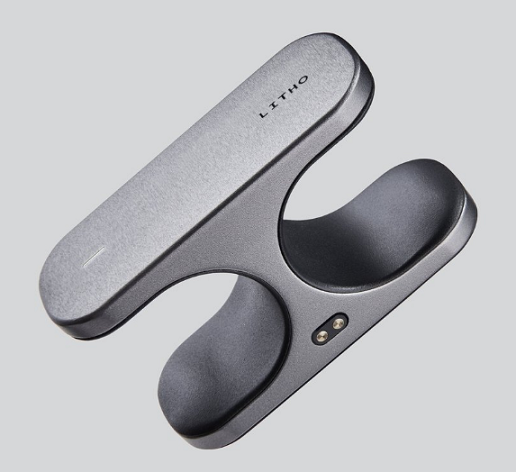This report was first published on our sister Site, Whats New On The Net.
By: Amber Rose
 When we 1st read about this hardware + software company ‘LITHO’ we were taken up with the idea. ‘LITHO’ is the future, designed to interact with & control a spectrum of fresh technology such as the Internet of Things (IoT), augmented reality (AR) & virtual reality (VR). This finger-worn controller eases difficulties of connecting our physical environment with current digital options.
When we 1st read about this hardware + software company ‘LITHO’ we were taken up with the idea. ‘LITHO’ is the future, designed to interact with & control a spectrum of fresh technology such as the Internet of Things (IoT), augmented reality (AR) & virtual reality (VR). This finger-worn controller eases difficulties of connecting our physical environment with current digital options.
The idea behind the hardware was to build a more “intuitive interface“, which would smooth the creation of 3D elements & units connected to the Internet such as smarthome devices. The young developers Nat Martin & Charlie Bruce believe that smartphones, which are currently the interface of choice for controlling these new technologies, are “limited” as they’ve been designed to work with 2D rather than 3D.
In an email interview, CEO Nat explained about the problem they were trying to solve with Litho:
Computing is increasingly structured round the real world rather than the desktop. With the advent of smart devices such as lights, thermostats, & door locks, physical things are becoming digitally connected. Equally, with the advent of AR, digital things are becoming physically anchored in the real world . These are 2 sides of the same coin – digital interactions are entering physical space.
For these spatial interactions, the primary interface is the smartphone. However, smartphones were designed to interact with 2D Content on screens. Trying to interact with objects in the real world through a smartphone is like trying to do heart surgery with a spork. More often than not our phones end up being a frustrating barrier to the digital world, rather than a tool to enable interactions with it.
Having an input device, designed from the ground up for 3D interaction, opens a whole new paradigm of mobile interactions. Instead of an awkward and frustrating interface, developers can create precise yet effortless interactions in 3D space. This opens up a whole new range of use cases – architects & designers can create precise 3D models in the context of the real world, & gamers can create a virtual theme park in their back garden simply by pointing & drawing. At home, instead of opening up a smartphone app, searching for the right bulb, & operating a virtual dimmer, you can simply point & swipe to dim your lights.
Click here to read more.
